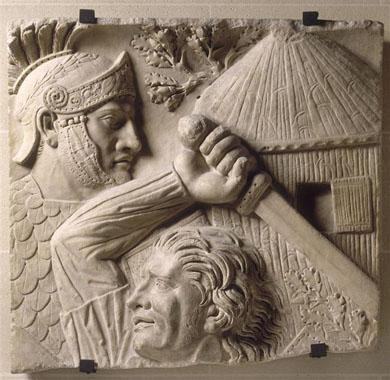Votre panier est vide
Besoin d'inspiration ?
Rendez-vous dans le programme en ligne du GrandPalais
Article -


The Middle Ages was a long period in the history of mankind. It lasted more than 1000 years : from 476, when the Western Roman Empire fell, to 1492, when America was discovered by Christopher Columbus. In the 5th century, the Barbarian invasions (Germans, Huns, Avars, Goths and Vandals) from Central Asia threw the whole of Europe, as well as Asia, into turmoil. These migrant peoples mixed with indigenous populations, meaning those based for a long time in one place. They founded new kingdoms (kingdom of the Francs, kingdom of the Visigoths), which are often the basis for our modern countries. While the Western Roman Empire (western and south-western Europe) was conquered by the Barbarians, the Eastern Roman Empire (Balkans and Asia Minor) survived. It was called the Byzantine Empire.

Native Americans and Pre-Columbians, isolated by the oceans, continued to develop their own culture. The Mayan (Mexico) and Inca (Peru) civilizations were flourishing before the European conquests began.

Votre panier est vide
Besoin d'inspiration ?
Rendez-vous dans le programme en ligne du GrandPalais
See content : 'Les métamorphoses du Grand Palais': a France 5 and france.tv documentary to watch again!

Article -
The Grand Palais is completing the biggest renovation project in its history. For the past two years, director Stefan Cornic has been tracking this metamorphosis with his camera, giving an overview of the multiple events that have taken place in the building since it was inaugurated in 1900. A documentary to watch again and again on France 5 and france.tv!
See content : From Paris 1900 to Paris 2024: the Grand Palais and its Nave, an architectural jewel restored right on time to meet sportsmen and women!

Article -
A regular venue for artistic and cultural events for over a century, the Grand Palais is reopening its majestic restored Nave for the Paris 2024 Olympic and Paralympic Games to become the place for fencing and taekwondo events! And don't forget: this is...
See content : Meanwhile, on the building site, the Grand Palais is back in full colour

Article -
A monument of stone, glass and metal, the Grand Palais blends into the urban landscape. However, on closer inspection, it is in fact bursting with colour, and one of the challenges of the restoration work currently underway is to restore all its chromatic...